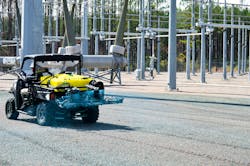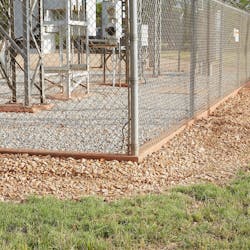Effectively controlling a wide variety of incompatible plant species is no easy task for vegetation managers. From product selections and application timing to expansive territories and unexpected infestations, it can be difficult for today’s practitioners to stay on top of it all.
While various herbicide treatment strategies can be used to maintain control of problematic vegetation that threatens roadway safety, electrical transmission reliability, lumber harvests or biodiverse wildlife habitat, most plants have the ability to grow tolerant to even the most trusted herbicide products on the market. Weed resistance to herbicides is relatively common on sites dedicated to agriculture, and rights-of-way commonly intersect with those areas. As mowers and other agricultural equipment is frequently transported, seeds from resistant species are commonly deposited along roadsides, where the control of incompatible vegetation is essential to roadway safety.
When targeted plants display the ability to survive and reproduce after exposure to a previously effective herbicide treatment, it’s imperative that vegetation managers make adjustments to enhance weed resistance management. The following insights shed light on one particular approach that can improve efficacy, productivity and resource management for most vegetation management programs.
Knowing When to Use New Chemistries
When targeted plants show signs of herbicide tolerance, it can be tempting for vegetation managers to simply use more product in hopes of reasserting control over problematic vegetation. There are cases in which this approach may work. However, any vegetation that survives treatments at increased use rates will likely produce equally resistant plants. Over time, increasing levels of tolerance will require higher and higher use rates. That’s why rotating new chemistries into planned treatment cycles can be an effective approach to not only maintaining control of incompatible vegetation, but also reducing the amount of herbicide used each year.
Introducing New Modes of Action
Product rotations are an easy way for vegetation managers to introduce new modes of action to a diverse arsenal of herbicide solutions. To ensure products from different herbicide groups with unique modes of action are used from one treatment to the next, always refer to product labels prior to purchase and/or application. The label should display a group number, which can be used to easily determine which modes of action are included in a product’s chemistry.
Introducing new modes of action to planned treatment cycles can enhance weed resistance management throughout utility substations.
Maximizing Annual ResourcesFrom a budgetary perspective, vegetation management programs are often asked to do more with less. Instead of burning through budgets with the overuse of herbicide products that targeted plants have grown to resist, introducing new modes of action can help vegetation managers use the least amount of product needed to ensure optimal suppression or control. As a result, practitioners are able to make best use of the annual resources provided to their programs each year.
Enhancing Environmental Stewardship
Tank-mixed solutions are a powerful resource for vegetation managers battling targeted plants that are resistant to previously effective herbicides. However, container storage and handling requirements associated with tank-mixing processes can be as troublesome as labor costs and accidental exposure to workers. That’s why Corteva Agriscience encourages the use of the Continuum® Prescription Control and Container Management System to industry professionals.
In addition to providing straight product or contract mixes that can help vegetation managers introduce new modes of action to their respective programs, the Continuum system is a closed-loop delivery solution that delivers returnable and refillable containers, which require zero mixing, washing or disposal. As a result, vegetation managers are able to enhance cashflow management, improve inventory tracking and minimize liabilities from theft.
The easy-to-handle containers provided through the Continuum system also encourage sound environmental stewardship by reducing landfill waste and spillage risks. Being able to return these containers after applying the impactful chemistries they contain allows vegetation managers to maintain novel control of problematic plant species, reduce maintenance costs and enhance safety for workers, wildlife species and the general public.
To learn more about environmentally responsible vegetation management practices, visit HabitatWithHerbicides.com.
™ ® Trademarks of Corteva Agriscience and its affiliated companies. © 2022 Corteva.
Sponsored By:


